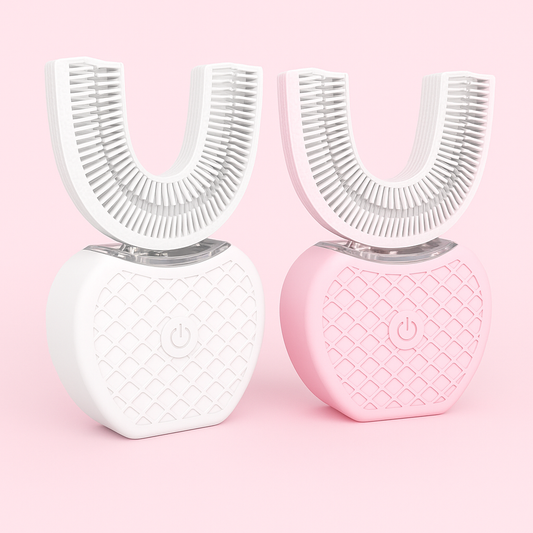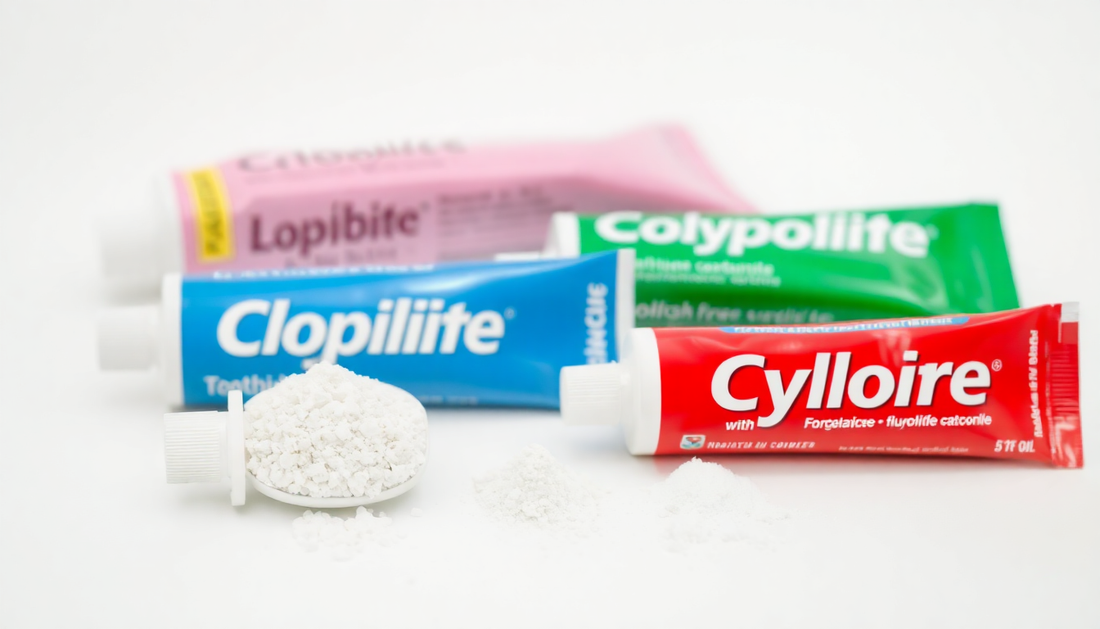Introduction
Choosing the right toothpaste in 2025 means balancing multiple goals: preventing cavities, preserving enamel, reducing gum inflammation, and minimizing surface stains for a brighter smile. In recent years, ingredients like niacinamide (vitamin B3) and xylitol have joined long-established actives such as fluoride. This guide provides an evidence-based comparison of niacinamide and fluoride, explains the role of xylitol, and helps you pick toothpaste that supports whiter, healthier teeth.
Why this matters: Oral health and appearance
Oral health affects overall health and quality of life. Tooth decay and gum disease remain common worldwide, while the desire for whiter smiles drives toothpaste innovation. Selecting an effective toothpaste can reduce risk of decay, maintain enamel strength and address surface staining without damaging teeth.
Quick summary: What to know up front
- Fluoride has the strongest, most consistent evidence for preventing cavities and helping enamel remineralization.
- Niacinamide shows promise for improving soft-tissue health and reducing inflammation but does not replace fluoride for caries prevention.
- Xylitol is a sugar alcohol that limits growth of cariogenic bacteria and synergizes with remineralizing agents.
- Toothpaste can remove surface stains (abrasives) or provide mild chemical whitening; dramatic color change usually requires professional treatments.
How fluoride works: a closer look
Fluoride supports oral health through several mechanisms:
- Remineralization: Fluoride helps redeposit minerals into early enamel lesions, making tooth structure more resistant to acid attack.
- Acid resistance: Fluoridated enamel forms a less-soluble mineral that reduces demineralization risk.
- Antibacterial effects: Fluoride can inhibit bacterial metabolism at the tooth surface.
Decades of clinical trials and large reviews support fluoride toothpastes as effective for reducing caries in community and individual use. Typical over-the-counter concentrations are designed to balance efficacy and safety when used as recommended.
Niacinamide in oral care: what the evidence shows
Niacinamide (a form of vitamin B3) is widely used in skincare for anti-inflammatory and barrier-supporting effects. In oral care, emerging research and product formulations suggest several potential roles:
- Anti-inflammatory properties that may soothe irritated gums.
- Support for cell repair in mucosal tissues, potentially helping with minor soft-tissue lesions.
- Possible adjunctive benefit for sensitive or inflamed mouths when combined with remineralizing agents.
However, randomized controlled evidence for niacinamide toothpaste specifically preventing cavities or producing whitening effects is limited. Consider niacinamide an adjunct that can improve comfort and gum health rather than a primary anticaries active.
Xylitol: the antibacterial sugar alternative
Xylitol is a five-carbon sugar alcohol used as a sweetener in many oral-care products. Its oral-health benefits stem from:
- Interfering with the metabolism of Streptococcus mutans and other cariogenic bacteria, which rely on fermentable sugars to produce acid.
- Reducing plaque accumulation and lowering cariogenic bacterial counts with regular use.
- Being safe for daily use and compatible with many toothpaste formulations, including fluoride and fluoride-free options.
Xylitol is not itself a remineralizing agent, but by lowering bacterial acid production it complements fluoride or hydroxyapatite-based strategies.
Whitening mechanisms in toothpaste
Toothpastes can affect tooth color through several mechanisms. Understanding these helps you choose a product that whitens safely:
- Physical abrasives: Materials like hydrated silica, calcium carbonate or baking soda remove extrinsic stains. The key is a balance between stain removal and enamel preservation.
- Chemical whitening: Low concentrations of peroxide or other oxidizers can lighten intrinsic discoloration, but these are more commonly used in gels and professional treatments.
- Optical agents: Compounds such as blue covarine temporarily shift the visual perception of tooth color by depositing a thin film.
- Enamel preservation: Remineralizing ingredients (fluoride, hydroxyapatite) help maintain enamel integrity and thus prevent color changes caused by demineralization.
Side-by-side: Niacinamide vs Fluoride
- Primary role: Fluoride — anticaries and remineralization; Niacinamide — anti-inflammatory, soft-tissue support.
- Evidence strength: Fluoride — strong, long-term clinical evidence; Niacinamide — limited in oral-care-specific trials.
- Whitening impact: Neither is primarily a whitening agent; fluoride preserves enamel color, niacinamide does not whiten teeth.
- Use together? Yes — niacinamide can complement fluoride in formulations targeting both gum health and cavity prevention.
How to read toothpaste labels like a pro
When comparing products, check these label elements and understand what they mean:
- Active ingredient(s): Look for fluoride (sodium fluoride, stannous fluoride) if you want proven anticaries protection, or hydroxyapatite/calcium phosphate if you prefer fluoride-free remineralization.
- Xylitol: Listed among sweeteners or actives — an indicator of bacterial-control benefits.
- Whitening agents: Hydrated silica, baking soda, peroxide, or optical agents — assess whether they suit your sensitivity and whitening expectations.
- Abrasivity info: Some brands publish RDA (Relative Dentin Abrasivity) — lower values are gentler; if RDA is not listed, prefer labels that say 'low abrasivity' or 'enamel safe' for everyday use.
- Additional actives: Niacinamide, potassium nitrate (for sensitivity), stannous fluoride (also reduces sensitivity and gingivitis) — each has specific benefits.
Choosing toothpaste by goal
- Maximum cavity prevention: Fluoride toothpaste (1000–1500 ppm typical OTC range) plus xylitol if available.
- Fluoride-free cavity control: Hydroxyapatite or calcium phosphate formulations with xylitol to reduce bacterial acid production.
- Gum inflammation or sensitivity: Formulas that include niacinamide or anti-inflammatory/sensitivity actives paired with a remineralizing agent.
- Whitening while protecting enamel: Low-abrasivity whitening paste combined with a remineralizing agent (fluoride or hydroxyapatite) and xylitol for bacterial control.
Special populations: kids, pregnant people, braces and older adults
- Children: Use age-appropriate fluoride concentrations and supervise brushing to limit swallowing. Pediatric formulations often balance lower fluoride with fun flavors.
- Pregnancy: Maintain routine preventive care; most toothpaste ingredients are safe, but consult your dentist for personal recommendations.
- Braces or orthodontics: Higher plaque accumulation risk — choose a gentle, anticaries toothpaste with xylitol and consider stannous fluoride options that help control gingivitis.
- Older adults: Dry mouth, root exposure and sensitivity are common — select remineralizing formulas with fluoride or hydroxyapatite and xylitol to protect exposed roots.
Practical daily routine for best results
- Brush twice daily for two minutes with a soft-bristled brush and a pea-sized amount of adult toothpaste.
- Floss daily and consider interdental cleaning; this removes stain-prone plaque that toothpaste alone can’t reach.
- When you use fluoride toothpaste, spit but avoid vigorous rinsing immediately after brushing to let fluoride contact tooth surfaces longer.
- If you use a whitening or high-abrasivity paste intermittently, alternate with a remineralizing paste to protect enamel.
- Visit your dentist regularly for professional cleaning and personalized advice, especially if you have persistent staining, sensitivity or gum disease.
Common myths and clarifications
- Myth: Natural or vitamin-only toothpastes are as effective as fluoride for preventing cavities. Fact: Vitamins like niacinamide can aid gum comfort, but they lack the large body of evidence showing fluoride’s anticaries benefit.
- Myth: Xylitol alone prevents all cavities. Fact: Xylitol reduces cariogenic bacteria but works best in combination with remineralizing agents.
- Myth: Whitening toothpastes bleach teeth like professional treatments. Fact: Most OTC toothpastes remove surface stains; deeper whitening typically requires peroxide-based treatments under dentist supervision.
How to evaluate product claims and clinical evidence
Look for product claims backed by clinical studies or endorsements from dental organizations. Brands that publish study details, ingredient concentrations, and test methods allow informed decisions. If a product claims both whitening and cavity prevention, check whether it specifies the whitening mechanism (abrasive, peroxide, optical) and the anticaries active (fluoride, hydroxyapatite).
SEO-friendly product search tips
When searching for products online, use precise keyword phrases to find what you need. Examples of search-friendly queries include:
- 'best whitening toothpaste with xylitol'
- 'toothpaste without fluoride and with xylitol'
- 'niacinamide toothpaste for gums'
- 'fluoride toothpaste free hydroxyapatite xylitol'
If you want to browse curated options that combine whitening, xylitol and clinically active ingredients, consider reviewing product ranges from specialized oral-care retailers. For example, you can explore options labeled 'best toothpaste for whiter teeth' and 'toothpaste with xylitol' at Havana Body, where formulations are organized by goals like whitening, cavity protection and sensitivity reduction.
Expanded FAQs
Can niacinamide toothpaste replace fluoride for cavity prevention? No. Niacinamide supports soft-tissue comfort and may reduce inflammation, but it lacks the robust evidence base of fluoride for remineralization and cavity prevention. Use niacinamide as a complementary ingredient rather than a substitute.
Is xylitol safe and effective? Yes — xylitol is safe for human use (but toxic to dogs) and effective at reducing cariogenic bacteria when used regularly. It’s a useful addition to both fluoride and fluoride-free toothpastes.
What is the safest way to whiten teeth at home? For safe at-home whitening, prefer low-abrasivity whitening toothpastes for daily stain control and consult your dentist about peroxide-based at-home kits or in-office options for more powerful whitening. Professional guidance helps avoid overuse that can damage enamel or irritate gums.
Are fluoride-free toothpastes as good? Some fluoride-free formulations with hydroxyapatite or calcium phosphate show promising remineralizing potential in studies. If you opt for fluoride-free, choose one with a proven remineralizing agent and xylitol, and discuss with your dentist if you are at higher caries risk.
Practical product selection checklist
- Does the toothpaste list an active anticaries ingredient? (fluoride or hydroxyapatite)
- Is xylitol included if you want bacterial control beyond sweeteners?
- What whitening mechanism does it use (abrasive, chemical, optical)?
- Does the label indicate low abrasivity or provide RDA info?
- Are additional actives like niacinamide present for gum comfort or potassium nitrate for sensitivity?
- Does the brand publish clinical evidence or study summaries supporting its claims?
Where to buy and what to expect
Many retailers and specialist sites offer toothpastes tailored to whitening, sensitivity, or fluoride-free preferences. If you want a streamlined shopping experience focused on combinations like 'whitening + xylitol' or 'fluoride toothpaste free', check curated collections and product filters. For curated options combining whitening, xylitol and carefully chosen actives, visit Havana Body to compare products labeled as 'best toothpaste whitening teeth' and 'best toothpaste for whiter teeth'.
Final recommendations
To maximize both whitening and oral health:
- Prioritize a remineralizing active — fluoride for most people, or hydroxyapatite for fluoride-free preferences.
- Choose a toothpaste that includes xylitol to reduce cariogenic bacteria.
- Consider niacinamide as a complementary ingredient if you have inflamed gums or need soft-tissue support.
- Balance whitening goals with enamel safety: prefer low-abrasivity whitening formulations and consult your dentist for more aggressive whitening needs.
Conclusion and call to action
In the debate of niacinamide vs. fluoride, fluoride remains the evidence-backed choice for cavity prevention and enamel remineralization. Niacinamide is a valuable adjunct for gum comfort and inflammation control but should not replace fluoride for anticaries protection. Xylitol strengthens your routine by limiting harmful bacteria and pairs well with either fluoride or fluoride-free remineralizing strategies. For consumers seeking products that combine these strengths—whitening performance, xylitol antibacterial action, and carefully selected actives—consider reviewing curated toothpastes and oral-care kits.
Explore tested formulations that target whitening and oral health at Havana Body. Whether you need the 'best toothpaste for whiter teeth', a 'toothpaste without fluoride' option, or a 'toothpaste with xylitol' that supports everyday protection, Havana Body’s selection can help you find a product matched to your goals. Visit Havana Body to compare ingredients, read product details, and choose a toothpaste that supports both whiter and healthier teeth.
Always consult your dentist for personalized advice—especially if you have active tooth decay, gum disease, sensitivity, or medical conditions that affect oral health.


